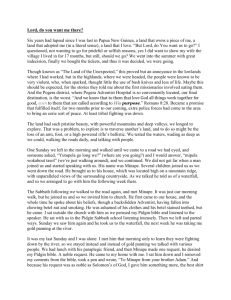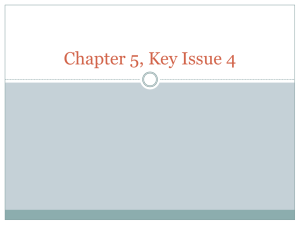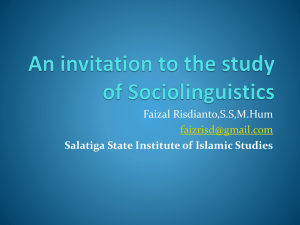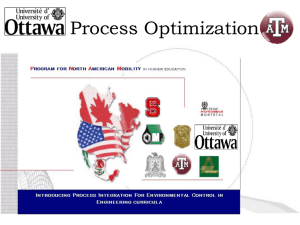entire document as PDF file
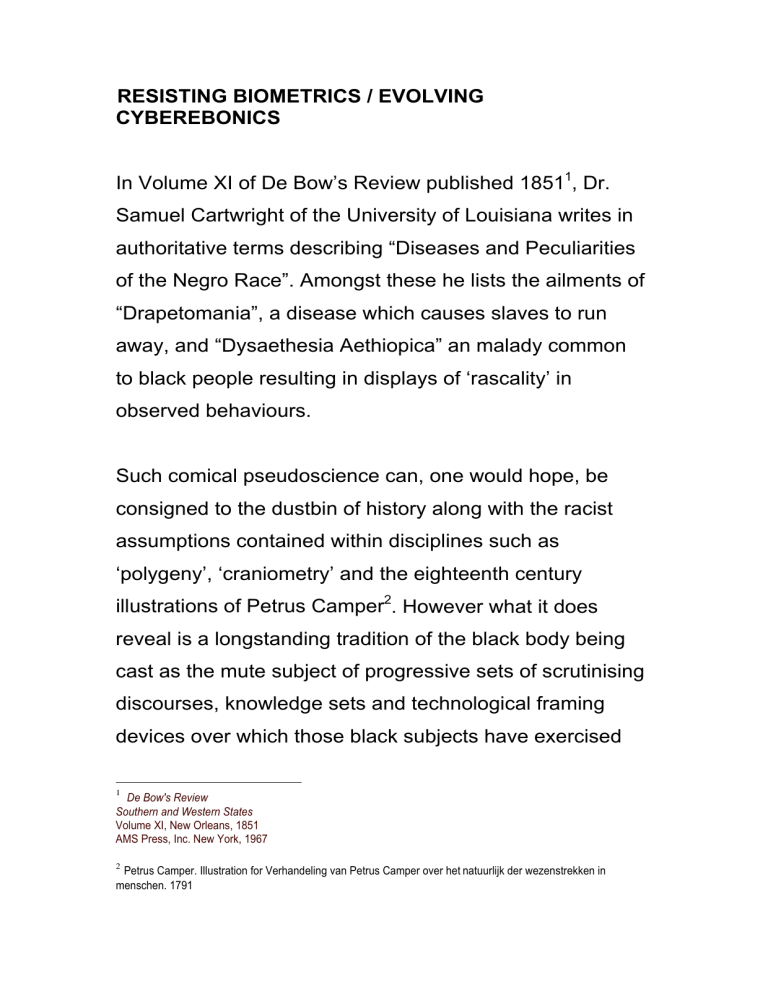
RESISTING BIOMETRICS / EVOLVING
CYBEREBONICS
In Volume XI of De Bow’s Review published 1851
1
, Dr.
Samuel Cartwright of the University of Louisiana writes in authoritative terms describing “Diseases and Peculiarities of the Negro Race”. Amongst these he lists the ailments of
“Drapetomania”, a disease which causes slaves to run away, and “Dysaethesia Aethiopica” an malady common to black people resulting in displays of ‘rascality’ in observed behaviours.
Such comical pseudoscience can, one would hope, be consigned to the dustbin of history along with the racist assumptions contained within disciplines such as
‘polygeny’, ‘craniometry’ and the eighteenth century illustrations of Petrus Camper
2
. However what it does reveal is a longstanding tradition of the black body being cast as the mute subject of progressive sets of scrutinising discourses, knowledge sets and technological framing devices over which those black subjects have exercised
1
De Bow's Review
Southern and Western States
Volume XI, New Orleans, 1851
AMS Press, Inc. New York, 1967
2
Petrus Camper. Illustration for Verhandeling van Petrus Camper over het natuurlijk der wezenstrekken in menschen. 1791
little or no control. These traditions of positioning the black individual as the subject of technological scrutiny whilst simultaneously imagining the black subject as occupying a space wholly outside of the technological domain, still colours the perceptions of the non white ‘other’ within contemporary discourses ranging from the soap opera to the so called ‘war on terror’. In the latest variation on the craniologists mantra of ‘measuring heads’, the fetid imagination of US Secretary of Homeland Security Tom
Ridge, followed in usual close pursuit by UK Home
Secretary David Blunkett, has seized upon the technologically savvy sounding term of the ‘Biometric’ as a key tool in their self generating struggle with international
‘Islamic’ terrorism. According to the website of the
Biometric Consortium
3
;
“Biometrics are automated methods of recognizing a person based on a physiological or behavioral characteristic. Among the features measured are; face, fingerprints, hand geometry, handwriting, iris, retinal, vein, and voice.”
The premise being, one would assume, firstly; that terrorist intent is somehow mapped onto a particular configuration of physical characteristics which can be defined digitally;
3
http://www.biometrics.org/
and secondly, that Islamic terrorists, being ‘other’ and hailing from ‘non technological’ spaces will be incapable of generating high-tech strategies capable of foiling the digital hegemony of the New American Century.
To extend the point further, Biometrics also assumes that the subjects of it’s ‘othering’ gaze reside wholly and definably within the realm of the body, and the body when seen in isolation/opposition to the cerebral and technological is conventionally the domain of the ‘black’. It therefore becomes a double imperative that the presumptions which underlie this set of binary oppositions is subjected to scrutiny, especially at those points within which the black subject, as artist, technologist, researcher or end user becomes a key actor within the technological domain.
Much has been written about the multiple ways in which artists of colour have constructed complex strategies through which our assumed exclusion from the technological domain is systematically challenged. Musical traditions for example, so often misread as the exclusive domain of the body, has, in notable cases, such as within the evolution of Jamaican Reggae, been generated
through a complex and evolutionary exchange between social and festive forms and available sound recording, broadcast and distribution technologies. The further evolutionary development of related dance-hall and DJ orientated forms such as hip-hop and the resultant mushrooming of myriad dance music styles are further evidence of the impact of digital sampling and sequencing tool sets when applied within a ‘black’ creative context.
The perception of the black artist as an innovative end user of digital technologies within both contemporary music and the visual and filmic arts has by now percolated through into the popular consciousness. More contentious perhaps is the perception of the black as key and active player within the innovation of the technological toolsets themselves, as scientist, programmer and innovator.
A fascinating figure in this regard is John ‘JT’ Thompson.
One time lead software engineer at Macromedia and professor of Interactive Telecommunications Program at
NYU/Tisch, he has etched out a unique place within the history of the creative applications of computer programming as the inventor of ‘Lingo’. In 1988 ‘JT’ became involved in the evolution of a programme called
‘VideoWorks Interactive Pro’ which had been developed
by the MacroMind company. Applying his interest in
‘object oriented programming’, he developed ‘Lingo’ as the programming language at the core of the newly launched Director version 1.0. In subsequent years
Director has evolved numerically to the 2004 release of version 10.. more widely known as Director MX 2004 and retains a position of one of the key interactive authoring environments used by contemporary artists and interactive designers. In all cases, ‘Lingo’ has remained the core programming language with which the human artist or designer construct a set of instructions which can be read and executed by a computer running the ‘Director’ environment.
What should be seen as unremarkable, but unfortunately still has the potential to raise many a surprised eyebrow when pointed out, is that John ‘JT’ Thompson is what has come to be described as an ‘African American’. This fact is significant to me, not just as a useful tool within a critique of contemporary amnesia around black contributions to our technological space, or within debates around the promotion of so called ‘positive images’ and role models.
Its significance also lies within the symbolic and conceptual role of ‘Lingo’ within the complex shared space between the human and the machine.
To expand this point, conventionally, within any initial encounter with ‘the other’, one of the key crises is generated at the level of the linguistic… the lack of a shared and mutually understood set of communicative codes upon which dialogue can be founded. Historical narratives, especially those which surround European colonial expansion, are littered with incidents, (and often the brutal and tragic consequences of those incidents) within which different and at times conflicting symbolic meanings were attached to behavioural codes on the part of the encountering and the encountered.
Where these encounters needed to be sustained, often within the context of trading relationships or to entrench exploitative systems such as the ‘Plantocracy’, a mutual
‘inter-language’ was evolved, often deriving terms and linguistic structures from the languages of the two or more groups involved in the encounter. These new languages are often referred to as ‘patois’ or ‘pidgin’. The artist Erika
Tan explored the various codes through which the ‘interlanguage’ of ‘Pidgin’ promotes the possibility of ‘slippage, invention, creative adaptation, flexibility and fluidity of communication exchanges’ within her 2002 monograph
publication ‘Pidgin interrupted transmission’
4
. Tan also provides us with a succinct definition of the term ‘Pidgin’.
“ The dictionary definition of 'pidgin', is a
Chinese corruption of the English term
'business', used to describe a colloquial language made up of elements of two or more other languages.” 5
This colloquial language which enables us to engage in
‘business’ with that which we may perceive as ‘Other’ provides us with a useful insight into the development of an ‘inter-language’, a colloquial tongue, a pidgin, a shared
‘lingo’ with which we can do creative business with the machine intelligence of the computer.
In my 2003 project ‘Robot Bodies’, I argue for the existence of a metaphorical paralleling between the perception of the ‘robot’, the machine subject, within science fiction, and ongoing social perceptions around the racial ‘Other’. In the related essay ‘Notes on the
Mechanoid’s Bloodline: Looking at Robots, Androids, and
4
Pidgin
Erika Tan
© 2002
Edited by Simon Willmoth
ISBN 0-9538634-8-4
5 http://www.fvumbrella.com/html/pidgin.html
Cyborgs’
6
, I point to the derivation of the term ‘Robot’, with it’s roots in the Czech term for ‘servitude’ a well as the first use of the term within Karel Capek’s 1920 play ‘Rossum’s
Universal Robots’. Within this play, the Robots make up a slave class who rise up to overthrow their human overseers. Within this, a literary pattern was established within which the robot becomes invariably either the loyal servant or the marauding monster, but within all cases, it remains incontrovertibly ‘other’.
It could be argued that the computer… as either the ‘brain’ of the robot, or the disembodied robot, shares that same status as ‘other’, alternating between helpful and compliant servant or all pervasive threat, stealing jobs, youth full innocence and control of our environment. Our progressive cycle social panic’s around the corrupting internet, the Y2K bug and the terrifyingly imagined omnipresent computer HAL in the Stanley Kubrick classic film ‘2001: A Space Odyssey’ (1968) make evident our ambivalent relationship with the computer.
6
‘Notes on the Mechanoid’s Bloodline: Looking at Robots, Androids, and Cyborgs’ p96-98
Art Journal
Vol. 60, no 3
Fall 2001
ISSN 0004-3249
Therefore, if the computer, like the robot can be seen as occupying a metaphorical space as ‘other’, then the interlanguage which we develop to speak directly to the computer becomes even more a parallel of ‘patois’ or
‘pidgin’.
Within this sense, the ‘Lingo’ created by African American programmer JT Thompson which allows for a mutual discourse between the ‘othered’ human and the ‘othered’ machine can be seen as a ‘black’ language system.. a
‘cyberEbonic’ form, if you like. ‘Lingo’ is technically what is described as a high level programming language.. using terms which the computer can readily translate into its
‘native’ language of machine code. It also allows one to progressively invent terms, (defined as ‘handlers’) with which you negotiate an agreed meaning with the host machine. As long as these meanings are established between the giver of the message and its receiver, the
‘business’ of the exchange can take place. These
‘handlers’ therefore represent an intimate code..
understood only within the closed context of the mutually agreed dialogue. It remains meaningless to anyone positioned outside of that dialogue. This is very much akin to what Gill Scott Heron describes as ‘The Ghetto Code’; a constantly shifting and self inventing sequence of terms
which are evolved, exchanged and then systematically mutated within the direct, daily exchanges of individuals within black communities. Through this process, the ears of outsiders, state agencies and instruments of surveillance would never quite be able to keep up with it’s constantly shifting plane of complex meanings.
“I know whoever they were paying to listen in on my phone had to be saying well… dot, dot, ditti, dot, dot, dash..
I’m damned if I know”
Gill Scott Heron, The Ghetto Code.
From “The Mind of Gill Scott heron” 1979
Arista
It is this coded exchange… the development of
‘cyberEbonic’ language systems and possibilities, which for me takes programming as an activity out of the domain of the dry technician.. into the rich realm of black creative discourse and invention. To a huge extent we have the initial work of John JT Thompson to thank for this. The tool set which he established, lying at the core of the creative authoring application ‘Director’, opens possibilities for artists to enter into creative engagements with digital tools in an ever expanding innovative and interactive domain.
Keith Piper April 2004
